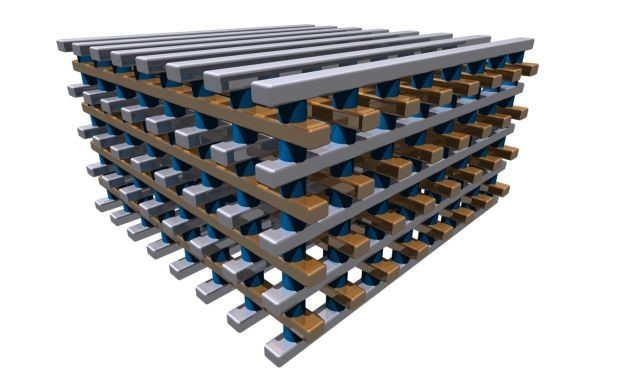Crossbar Inc., a Californian start-up that's relatively unknown in the storage market has unveiled a brand new form of storage technology, which they're calling Resistive RAM (RRAM). The technology allows for very high capacity and high performance non-volatile memory, capable of storing up to 1 TB of data on a 200 sq. mm chip that's smaller than a postage stamp.
Thanks to a three-layer structure, RRAM technology is also stackable and scalable, meaning multiple terabytes of storage can be delivered in the one 3D chip package if multiple chips are stacked atop one another. Crossbar claims these chips will have 20x faster write performance, 20x lower power consumption and 10x more endurance compared to "today's best-in-class NAND flash memory".

The technology is ready to be turned into a product, according to Crossbar's press release, after they produced a working demo product in a commercial fabrication plant which combines both a monolithic CMOS controller and the memory array. The company has been issued over 30 patents related to their RRAM, and they're looking to license it to various companies such as system-on-chip (SoC) designers, as well as producing its own standalone solutions.
Looking at Crossbar's RRAM overview page in-part reveals how the chip works. There are three layers to the chip: a metal top electrode, a silicon-based switching medium and a non-metal bottom electrode. A voltage is applied between the two electrodes, which causes a filament to form in the switching material. This allows for data to be stored in an apparently simple cell structure.
Crossbar didn't specify when this new storage technology is expected to be ready, but at this stage the company is optimizing the technology for implementation in the embedded SoC market.
https://www.techspot.com/news/53497-new-resistive-ram-packs-1-tb-of-storage-into-a-single-chip.html